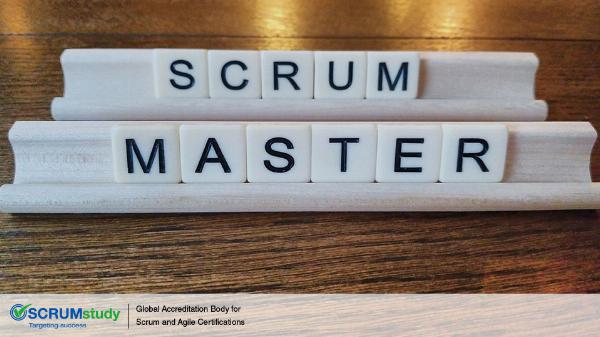Scrum Fundamental Certified: Comprehensive Guide to Mastering Scrum

Introduction to Scrum Fundamental Certified
Scrum, a powerful framework for agile project management, has revolutionized the way teams approach complex projects. The Scrum Fundamental Certified (SFC) credential is an entry-level certification designed to help professionals understand the core principles and practices of Scrum. Achieving this certification signifies a fundamental grasp of Scrum, making it an excellent starting point for those new to agile methodologies.
The Importance of Scrum Certification
Boosting Career Prospects
In today's fast-paced and competitive job market, having a Scrum certification can significantly enhance your career prospects. Employers highly value certified professionals because they demonstrate a commitment to mastering agile practices and principles. The SFC certification is particularly valuable for individuals looking to break into the field of project management or enhance their current role within a Scrum team.
Enhancing Team Performance
Scrum professionals Certified bring a wealth of knowledge to their teams. By understanding and implementing Scrum principles, they can help streamline processes, improve communication, and foster a culture of continuous improvement. This leads to higher productivity and more successful project outcomes.
Understanding the Basics of Scrum
What is Scrum?
Scrum is an agile framework designed to facilitate the development and delivery of complex products. It emphasizes iterative progress, collaboration, and flexibility, allowing teams to adapt quickly to changes and deliver high-quality results.
Core Principles of Scrum
Empirical Process Control: Scrum is grounded in the concept of empirical process control, which relies on transparency, inspection, and adaptation. This approach ensures that decisions are based on observable data and experience rather than assumptions.
Self-Organization: Scrum encourages teams to self-organize around their work. This autonomy fosters creativity and innovation, leading to better solutions and higher team morale.
Collaboration: Effective collaboration between team members and stakeholders is essential in Scrum. This collaborative environment ensures that everyone is aligned and working towards common goals.
Value-Based Prioritization: Scrum prioritizes work based on its value to the customer. By focusing on delivering the most valuable features first, teams can ensure that they are meeting customer needs effectively.
Time-Boxing: Scrum uses time-boxed iterations, known as sprints, to create a sense of urgency and focus. Each sprint typically lasts two to four weeks, during which specific goals are set and achieved.
Roles in Scrum
Scrum Master
The Scrum Master is responsible for facilitating Scrum processes, ensuring that the team adheres to Scrum principles, and removing any obstacles that may impede progress. They act as a coach and guide for the team, helping them to continuously improve.
Product Owner
The Product Owner is responsible for defining and prioritizing the product backlog. They represent the interests of the stakeholders and ensure that the team is working on the most valuable features. The Product Owner's decisions are crucial in guiding the development process.
Development Team
The Development Team consists of professionals who are responsible for delivering a potentially shippable increment at the end of each sprint. They are cross-functional, meaning they have all the skills necessary to create the product increment without relying on external help.
Scrum Events
Sprint Planning
Sprint Planning is the event where the team collaboratively decides what work will be completed in the upcoming sprint. The Product Owner presents the highest priority items from the product backlog, and the team discusses and commits to the work they can realistically complete.
Daily Scrum
The Daily Scrum is a brief meeting held every day during the sprint. It allows the team to synchronize their activities and plan their work for the next 24 hours. Team members discuss what they have accomplished since the last meeting, what they plan to do next, and any impediments they are facing.
Sprint Review
At the end of each sprint, the team holds a Sprint Review to demonstrate the completed work to stakeholders. This event provides an opportunity for feedback and ensures that the product is evolving in the right direction.
Sprint Retrospective
The Sprint Retrospective is held after the Sprint Review and before the next Sprint Planning. It allows the team to reflect on the sprint and identify areas for improvement. The goal is to continuously enhance the team's processes and performance.
Scrum Artifacts
Product Backlog
The Product Backlog is a prioritized list of features, enhancements, and fixes that the team needs to work on. It is dynamic, constantly evolving based on stakeholder feedback and changes in market conditions.
Sprint Backlog
The Sprint Backlog is a subset of the Product Backlog that the team commits to completing during a sprint. It includes detailed tasks and responsibilities, providing a clear plan for the sprint.
Increment
The Increment is the sum of all the Product Backlog items completed during a sprint. It represents a potentially shippable product that meets the team's Definition of Done.
Benefits of Scrum Fundamental Certified
Comprehensive Understanding of Scrum
The SFC certification provides a thorough understanding of Scrum principles and practices. This foundational knowledge is essential for anyone looking to implement Scrum effectively within their organization.
Enhanced Team Collaboration
Certified individuals can foster better collaboration within their teams. By understanding the roles, events, and artifacts of Scrum, they can ensure that everyone is aligned and working towards common goals.
Increased Productivity
Implementing Scrum principles can lead to higher productivity by reducing waste and focusing on delivering value. Teams can work more efficiently, adapting quickly to changes and continuously improving their processes.
Career Advancement
Achieving the SFC certification can open up new career opportunities. It demonstrates a commitment to professional development and a mastery of agile practices, making certified individuals more attractive to employers.
Preparing for the Scrum Fundamental Certified Exam
Eligibility and Prerequisites
There are no formal prerequisites for the SFC certification, making it accessible to a wide range of professionals. However, having a basic understanding of agile principles and project management can be beneficial.
Study Materials and Resources
A variety of study materials are available to help candidates prepare for the SFC exam. These include books, online courses, practice exams, and official Scrum guides. Utilizing these resources can help candidates build a solid understanding of Scrum principles.
Training Programs
Many organizations offer training programs specifically designed for the SFC certification. These programs provide hands-on experience and in-depth knowledge of Scrum, helping candidates to apply what they have learned in real-world scenarios.
Exam Structure
The SFC exam typically consists of multiple-choice questions that test a candidate's understanding of Scrum principles and practices. It is important to thoroughly review the study materials and practice exams to ensure a strong performance on the test.
Conclusion
The Scrum Fundamental Certified (SFC) credential is an excellent starting point for professionals looking to understand and implement Scrum principles. It provides a comprehensive understanding of Scrum, enhances team collaboration, increases productivity, and opens up new career opportunities. By preparing thoroughly and utilizing available resources, candidates can successfully achieve this valuable certification and contribute more effectively to their teams and organizations.
Note: IndiBlogHub features both user-submitted and editorial content. We do not verify third-party contributions. Read our Disclaimer and Privacy Policyfor details.







